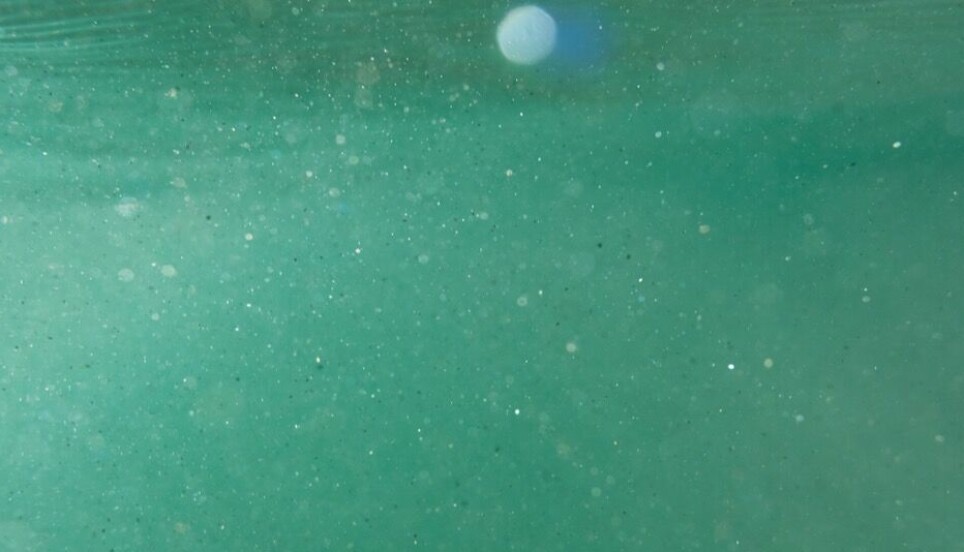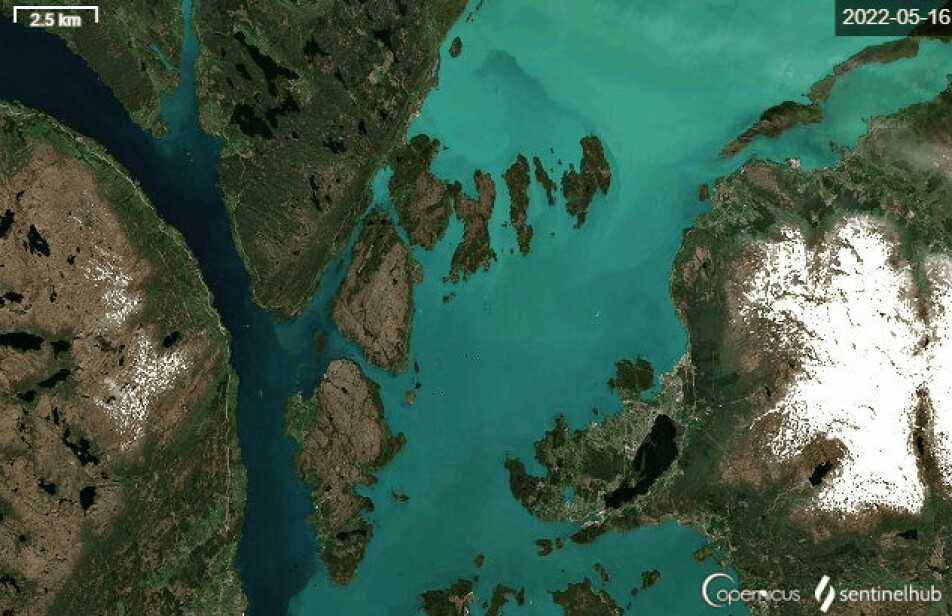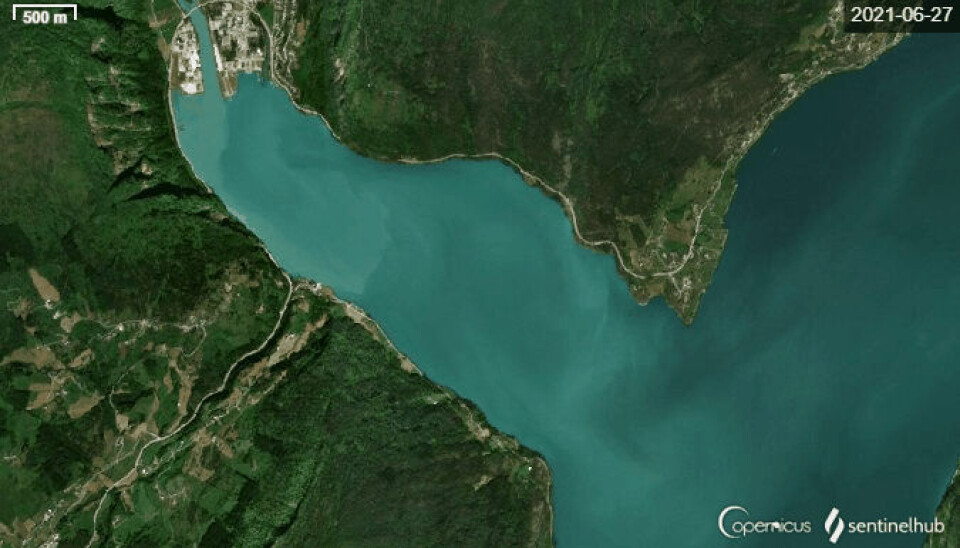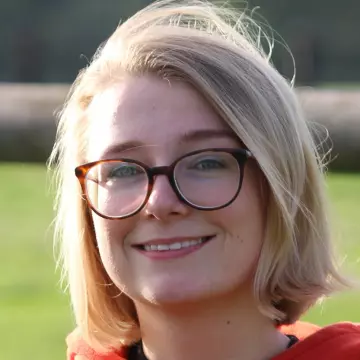Share your science:

Why do some Norwegian fjords turn green?
SHARE YOUR SCIENCE: Images from space can reveal the secrets behind the colours of the fjords.
Have you ever wondered why the colour of fjords change sometimes? Why are some green while others are blue or brown?
We can see these changes from space and even use the colour to understand what is happening inside the sea.
To understand the appearance of seawater, it helps to think of it as a soup!
Ingredients of the soup
Like many soups, the sea is a water-based salty mixture of dissolved and suspended materials. All of these ingredients impact the appearance and, just like soups, you can learn a lot about what the ingredients are just by looking at it.
For example, tomato soup is red while pea soup is green. However, sometimes tomato soup is spicy, but you might not be able to tell by looking at it. Knowing all the ingredients is important when piecing together the puzzle of the colour.
A soup unfit to eat
Unlike the soups we eat, the sea contains many living microscopic organisms which you might not want to ingest. Many of these microorganisms, called algae, convert sunlight and carbon dioxide into oxygen and food through photosynthesis just like trees do on land.
This process forms the base of the marine food chain and is important to monitor. When algae grow quickly in high numbers, they can create toxic conditions for sea life as well as ruining our opportunity for a summer swim.
Taking the danger out of Hardangerfjorden
However, the algae that turn Hardangerfjorden bright green almost every spring are not toxic at all. In fact, they may be one of our biggest defenders against climate change by removing carbon dioxide from the atmosphere. They are called coccolithophores, and unlike other microalgae, they cover themselves in a layer of chalky scales.
These scales scatter light so intensely that the fjord becomes almost milky.

New ingredients, same colour
Gaupnefjorden in Sogn also turns milky green every spring, but there’s no algae in the water. This time, melting of ice and snow in the nearby Jostedalsbreen is the culprit. Sand, silt and clay ground loose by the glacier flows into the fjord through Jostedøla river.

These tiny rocks are suspended in the water for a long time before sinking, and this mineral soup has a colour almost identical to the algae bloom in Hardangerfjorden. This spells trouble for the scientists trying to look at ocean colour from space!
Observing the Norwegian Fjords from space
These days, weekly or even daily satellite pictures of the fjords are available for everyone to look at. Satellite pictures of the open seas are easy to understand: most changes in the water colour are because of algae.
In the fjords, the soup becomes more complex. Other ingredients, in addition to the algae, influence the colour as well. If we want to know all the ingredients, we must go and see for ourselves!
The future is bright (green)
At the University of Bergen, we are working on solving this problem. We have been studying the green water in Hardangerfjorden and Gaupnefjorden for several years. We have a vision for the future: all of the ingredients from satellite pictures!
With the help of new technology on satellites and improved understanding of the ingredients, we expect to soon be able to tell apart different shades of green from space.
Share your science or have an opinion in the Researchers' zone
The ScienceNorway Researchers' zone consists of opinions, blogs and popular science pieces written by researchers and scientists from or based in Norway.
Want to contribute? Send us an email!






























